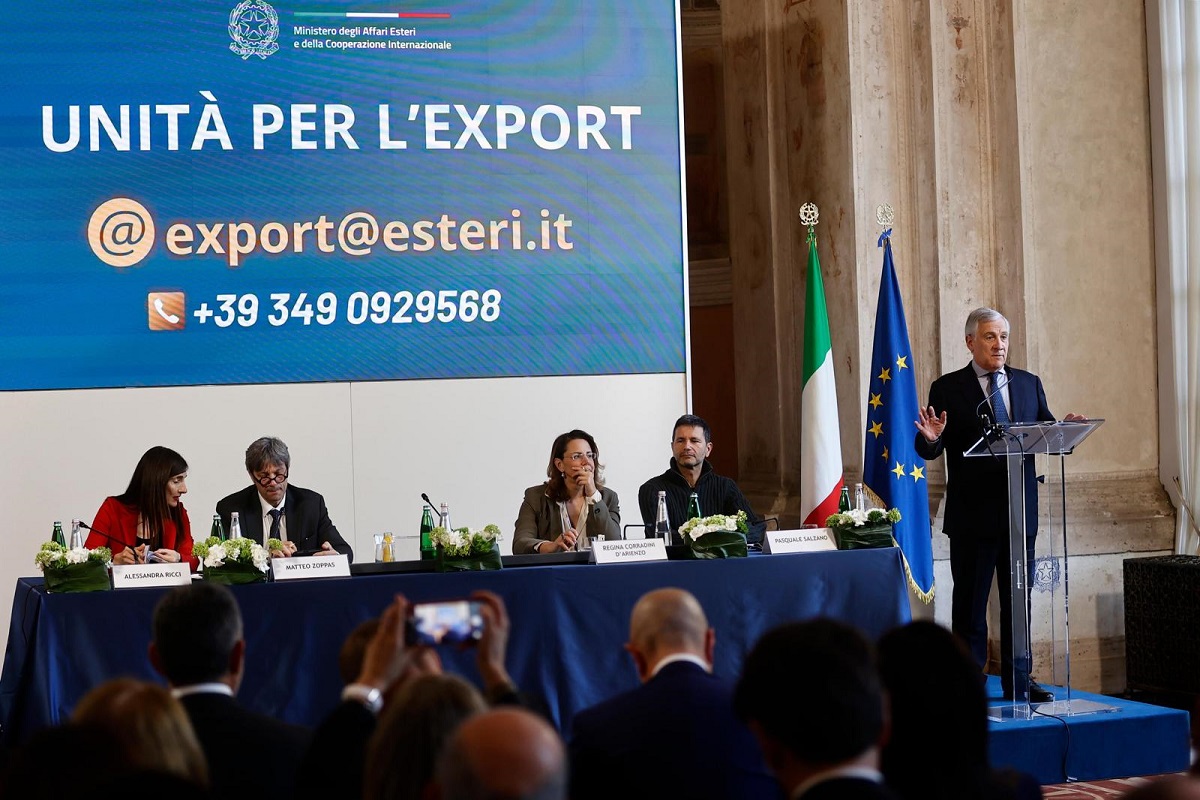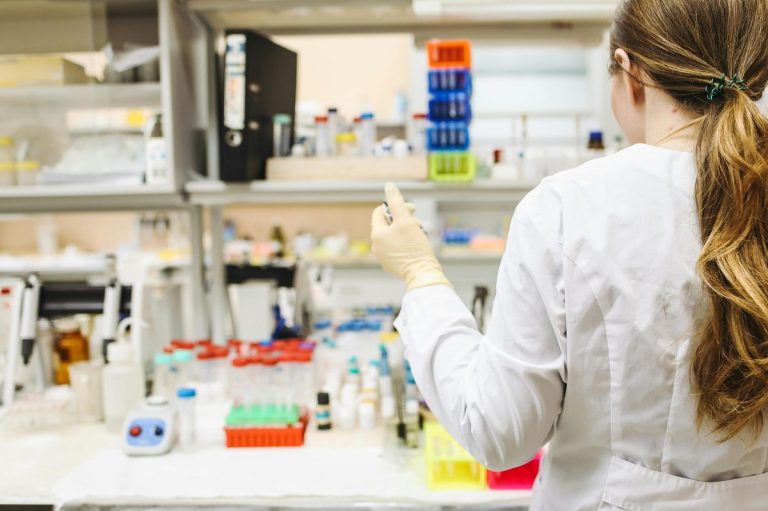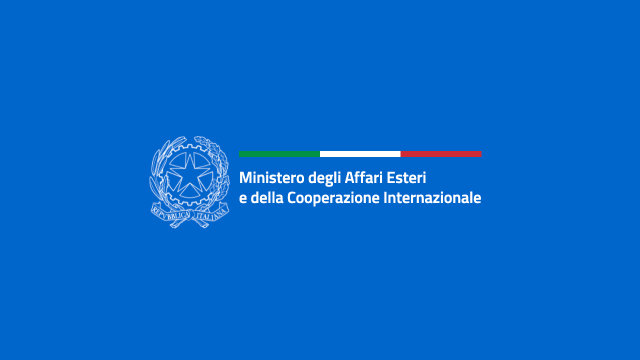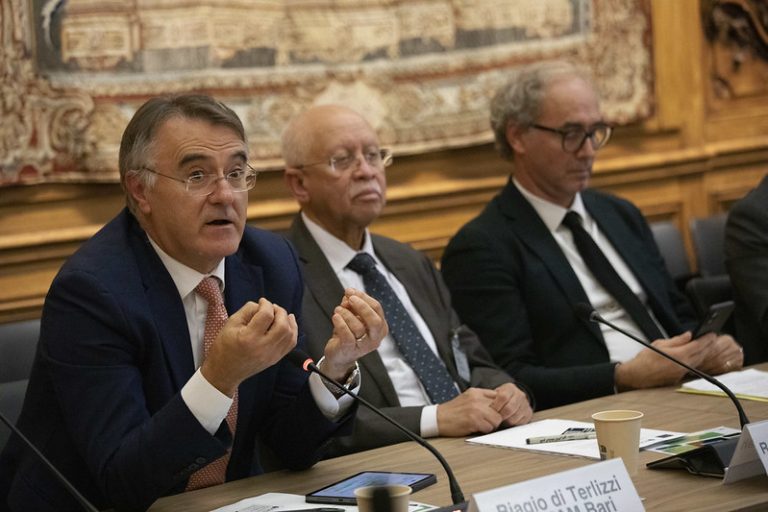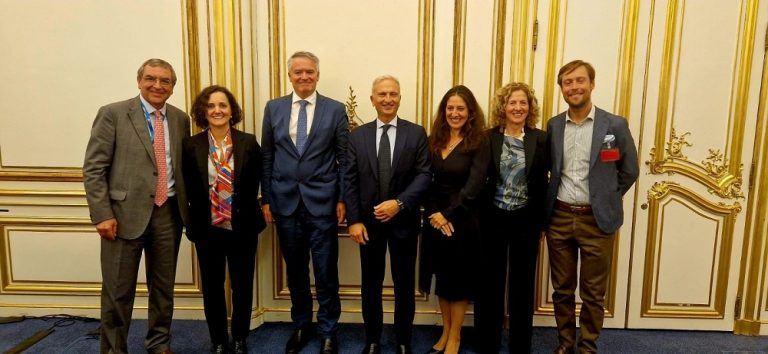The Country System united to conquer new markets
Italy confirms itself as an export superpower. With a value reaching almost 40% of GDP and sixth place in the world ranking, Italian exports are proving to be a fundamental driver for the national economy. Its strength also lies in an extraordinary production diversification, the largest in Europe and second in the world only to China, which enables it to compete in almost every sector. Last year, in fact, the sales of Made in Italy products reached a new record on non-EU markets, exceeding EUR 305 billion with a 1.2% increase.
Based on these results, the Ministry of Foreign Affairs and International Cooperation (MAECI) has set the ambitious goal of bringing the value of Italian exports to EUR 700 billion by the end of the legislature, in 2027. In view of achieving this goal, a strategic Action Plan for exports to high-potential non-EU markets has been launched, which is the result of a dialogue with the manufacturing world and is based on the operational synergy between all the players in the Italian System.
A Single Steering and Coordination Unit: Growth Diplomacy
MAECI is at the core of this strategy. It strengthens its role as a Steering and Coordination Unit for international trade, turning itself into a Ministry with a clear economic mission, with the aim of implementing “Growth Diplomacy”, an approach that sees the Italian diplomatic network mobilized to actively support companies. For this reason, in the Action Plan, Embassies evolve from representative offices to real operational bases and launch pads abroad, ready to accompany and assist companies with concrete services, strategic information (also thanks to the planned “Country Guides for Growth Diplomacy”) and promotional support. With a view to ensuring direct and constant dialogue, a special “Export Unit” has also been established at the Foreign Ministry (email: export@esteri.it, mobile: 3490929568) at the service of companies.
This Steering and Coordination Unit relies on the full collaboration of the other protagonists of the Country System, namely ITA, Simest, SACE and Cassa Depositi e Prestiti (CDP), with the aim of providing Italian companies – from SMEs to large groups – with integrated and coordinated assistance and support throughout the internationalization process, from the initial market analysis to risk management, from promotional to financial support.
A complete range of tools at the service of companies
In the MAECI strategy, ITA is the operational arm for promotion. It organizes participation in international fairs with dedicated national pavilions and promotes business missions and the incoming of foreign buyers into Italy. It stipulates strategic agreements with large-scale retail trade (GDO) and international e-commerce platforms to facilitate access to distribution channels. It provides direct assistance with personalized services (partner search, analysis, consultancy) and manages the new “Opportunitalia” plan to generate targeted commercial contacts in 20 key markets.
For its part, Simest intervenes with a range of financial solutions, especially for SMEs. By managing public funds on behalf of the Foreign Ministry (such as Fund 394/81), it provides subsidized loans and non-repayable grants to support productive investment, technological innovation, ecological and digital transition, and capital strengthening. It has implemented specific measures for priority geographical areas such as Africa (EUR 200 million), the Western Balkans (EUR 200 million) and Central and South America (EUR 200 million), besides supporting energy-intensive companies and participation in international infrastructure projects also through equity instruments. The aim is also to increase the number of direct exporting companies and support supply chains.
The risks related to export and internationalization are managed by SACE, which provides insurance coverage against commercial risks (non-payment) and political risks (nationalizations, instability), both for individual orders (Supplier Credit) and for project financing (Buyer Credit, Investment). It also provides guarantees on bank financing for the international growth of companies (Growth Guarantee) and deposits for participation in tenders and the execution of contracts abroad. It actively promotes Italian exports with the “Push Strategy” through guaranteed financing to large foreign buyers provided that they purchase from Italian suppliers (often SMEs), facilitating access to new value chains and organizing business matching events.
To complete the picture, Cassa Depositi e Prestiti (CDP) intervenes on larger operations and with complementary instruments. It provides medium-long term direct financing (Export Credit) to foreign counterparts (governments, banks, companies) for the purchase of Italian goods and services, often together with other banks and with SACE coverage. It also offers direct financing to medium and large Italian companies for their international growth plans (investment, acquisitions). As a Financial Institution for Development Cooperation, it finances sustainable projects in emerging countries, for example through the “Plafond Africa” for financing of up to EUR 500 million. Finally, it manages a digital Business Matching Platform operating in many target countries of the Plan, to facilitate the meeting between Italian and foreign companies.
Target markets: beyond traditional borders
The choice of markets on which to concentrate efforts is strategic. The Plan aims to diversify the destinations of Made in Italy products, stepping up penetration in emerging non-EU countries with high growth potential and strengthening the presence in mature markets where significant margins still exist.
The priority emerging markets include Turkey, a strategic partner with strong economic ties, which offers opportunities in advanced mechanics, infrastructure and digital technologies; the United Arab Emirates and Saudi Arabia, two fundamental hubs in the Gulf region, with large development plans focused on renewable energy, infrastructure, luxury segment and green technologies; China, which, despite recent declines, remains a huge market for high-quality goods, agri-food, fashion and pharmaceuticals. Again in Asia, another priority emerging market is India, an economic giant with huge growth prospects for mechanics, green technologies, consumer goods and infrastructure.
The Action Plan also looks at Mexico, Brazil, Algeria and South Africa, four countries that, besides offering opportunities in the automotive, agricultural machinery, infrastructure, raw materials and agri-food sectors, are equally privileged gateways to Latin America (in the case of Mexico and Brazil), and to the largest free trade area in the world:, namely the African Continental Free Trade Area – AfCFTA (in the case of Algeria and South Africa).
In fact, entire strategic regions for Made in Italy products add to the emerging markets. Therefore in the Action Plan, Africa – at the heart of the Mattei Plan – and Latin America are joined by ASEAN, the Association of Southeast Asian Nations, a highly growing with demand for machinery, renewables, chemicals and agri-food. Closer to Italy, Central Asia and the Western Balkans are the last two regions on which to concentrate the Country System’s action: the former because it is a crucial logistics hub between the Middle and Far East, with a strong demand for machinery, energy infrastructure and agro-industry, and the latter for its strategic proximity.
Finally, the Plan does not neglect non-EU mature markets, where the presence of Italian products can be strengthened and expanded: the United States is the second largest market for Made in Italy products; Switzerland is a nearby and rich outlet market for Italian exports; the United Kingdom, despite Brexit, is still an important partner for mechanics, food and health; Japan is a consumer base receptive to Italian excellence, while Canada offers growing opportunities favoured by the Comprehensive Economic and Trade Agreement (CETA) signed with the EU and in force since 2017.
The Steering and Coordination Unit for Internationalization shows the way to overcome global challenges
Before an audience of over 140 trade associations, present or connected remotely, the 13th meeting of the Steering and Coordination Unit for Internationalization was held at Villa Madama last 7 March. The Steering and Coordination Unit for Internationalization meets annually at a political level and exercises the powers of guidance and coordination in matters of Italian companies’ internationalisation. An even more important appointment, As underlined by the Deputy Prime Minister and Minister of Foreign Affairs, Antonio Tajani, this meeting is even more important in a phase of global uncertainty, which must be faced with pragmatism and with plans that can be concrete opportunities for the industrial sector.
The works of the Steering and Coordination Unit for Internationalization were opened by Minister Tajani together with the Minister of Enterprise and Made in Italy, Adolfo Urso. The other government representatives present were the Minister of Health, Orazio Schillaci, the Undersecretary of State for the Ministry of Agriculture, Food Sovereignty and Forests, Giacomo La Pietra, and the Undersecretary of State for the Ministry of Infrastructure and Transport, Tullio Ferrante.
The meeting focused on strategies to protect Italian companies on international markets and increase their competitiveness in the face of current geopolitical challenges. ISTAT data shows, in fact, that Italian exports are holding up even in a very complex global scenario. The slight decline in value recorded in 2024 (623.5 billion) was only slightly affected by the slowdown of the European economy and the international context. As a further demonstration of the vitality of the Italian production sector and the international projection of Italian companies, there was a real leap forward in the trade surplus (+61%), reaching almost 55 billion. Again in 2024, exports to the non-EU area stroke a record of 305 billion, the highest value in the last 10 years.
Considering the above, it was underlined that we need to develop innovative strategies to respond to increasingly intense external pressures and uncertainties generated by the international situation. The Steering and Coordination Unit for Internationalization therefore discussed a strategy based on targeted initiatives, including economic forums and sector business missions, which can provide further leverage to expand the Italian presence in emerging markets without, at the same time, forgetting consolidation in mature markets, ensuring the protection of Italian companies’ market shares. At European level, Italy’s action shall be directed towards a more competitive European trade policy, open to the diversification of markets and the strengthening of value chains, protecting Italian supply chains. Finally, particular attention was paid to events of great international importance and to sports diplomacy, which in 2025 will see the consolidation of the “Italian Sports Day in the World” to give maximum support and visibility to the next Olympic and Paralympic Games in Milan-Cortina 2026.
Green light for agri-food exports with the revision of the EU-Mexico Agreement
The political negotiations aimed at modernizing the Global Agreement between the EU and Mexico were successfully held in January, and they will now proceed with their respective procedures for conclusion and ratification. The issues on the agenda included reducing risks for supply chains, ensuring a reliable supply of critical raw materials and fighting against climate change. According to what indicated by the European Commission, the aim is to support companies’ competitiveness on both sides, ensuring progress towards achieving the shared goal of a net-zero emissions economy.
The agreement will open up a wide range of opportunities for EU farmers and agri-food exporters, as Mexico is a net importer of EU agri-food products. In particular, it will eliminate duties on important EU export products such as cheese, poultry, pork, pasta, apples, jams and marmalades, as well as chocolate and wine; increase the number of protected European products to 568; and make agri-food exports faster and cheaper thanks to simpler procedures.
The EU and Mexico traded €82 billion in goods in 2023, while bilateral trade in services reached €22 billion in 2022, making Mexico the EU’s second largest trading partner in Latin America.
The huge economic and business potential of the EU-India free trade agreement
The free trade agreement between India and the European Union (EU) – the negotiations of which have been relaunched between the parties since 2022 – would create a market of over 2 billion consumers, equivalent to over 20% of global GDP, and could generate concrete benefits in terms of economic growth, investment, and employment.
The EU is currently India’s main trading partner – ahead of both the United States and China – with €124 billion in goods traded in 2023 (over 12% of India’s total trade). This growing market offers major opportunities for Europe, but is still protected by high customs duties. It only accounts for 2.2% of EU trade in goods. The EU is particularly supporting the opening of the Indian market to cars and alcohol. For its part, India would like to sell its textiles and medicines more easily in Europe and requires more visas for its citizens.
Following a visit in February by European Commission President Ursula von der Leyen to India, the parties underlined their intent to reach an agreement by the end of 2025.
With SoutH2 Corridor, Italy becomes a strategic hub for hydrogen between Algeria and Europe
Algeria is attracting increasing interest from the EU and Italy, in particular. Besides being Italy’s leading energy supplier, it joined the SoutH2 Corridor project in January, together with Tunisia. The project envisages the construction of a hydrogen transport infrastructure between North Africa and the European market, of which the Italian segment will be a central element. The aim is to develop renewable hydrogen production plants and related infrastructure, thus strengthening European energy security and fostering trade and investment in Algeria and Tunisia.
The European Commission has included the Italian segment of the SoutH2 Corridor project being developed by Snam in the PCI (Project of Common Interest) list. In addition to Italy, Germany and Austria are also involved. The overall infrastructure envisages the construction of a 3,300 km long transport line, 70% of which is made up of existing infrastructure currently used for gas transport. It should be operational by 1 January 2030.
Italy pushes for EU negotiations on US tariffs
US tariffs have fuelled extensive debates in recent weeks. It seems impossible, however, to give up a market that alone accounts for one tenth of total Italian exports, for a value of EUR 64.7 billion in 2024. Therefore, the Government is opposed to any trade war with the United States. On the sidelines of the recent EU Foreign Affairs Council held in Trade format in Luxembourg, Foreign Minister Antonio Tajani reiterated: “We must protect our exports and the industrial system. For this reason we need to negotiate with the United States and a united Europe must do so.”
In the meantime, US President Donald Trump announced the immediate suspension for three months, as from 9 April – on the day of their entry into force – of reciprocal tariffs for countries that have expressed their intention to negotiate, including the EU, maintaining the 10% basic tariff for all. The tariffs initially decided by the US administration on European goods include 25% on automobiles and 25% on steel and aluminium.
Expo 2025 Osaka: all the Made in Italy excellence on display in the Italian Pavilion
In Japan, the Italian Pavilion at Expo 2025 Osaka will be a dynamic showcase of Made in Italy. “Art regenerates Life” is the theme of the space conceived by architect Mario Cucinella. The aim is to reinterpret history and culture in a modern and sustainable way, while promoting the values of creativity and innovation rooted in “know-how”. It will host daily theatrical performances and presentations of the lifestyle of 18 Italian regions on a rotating basis, offering visitors an immersive experience.
Throughout the six months of the Expo, design, fashion, advanced manufacturing, science, art and technology will showcase Italian products. The excellence of the Italian food and wine heritage will also be protagonist, thanks to the menu offered at the Eataly restaurant, which, located on the roof of the Italian Pavilion, will enable its guests to discover every culinary tradition, enhancing the biodiversity and specificities of local cuisine.

